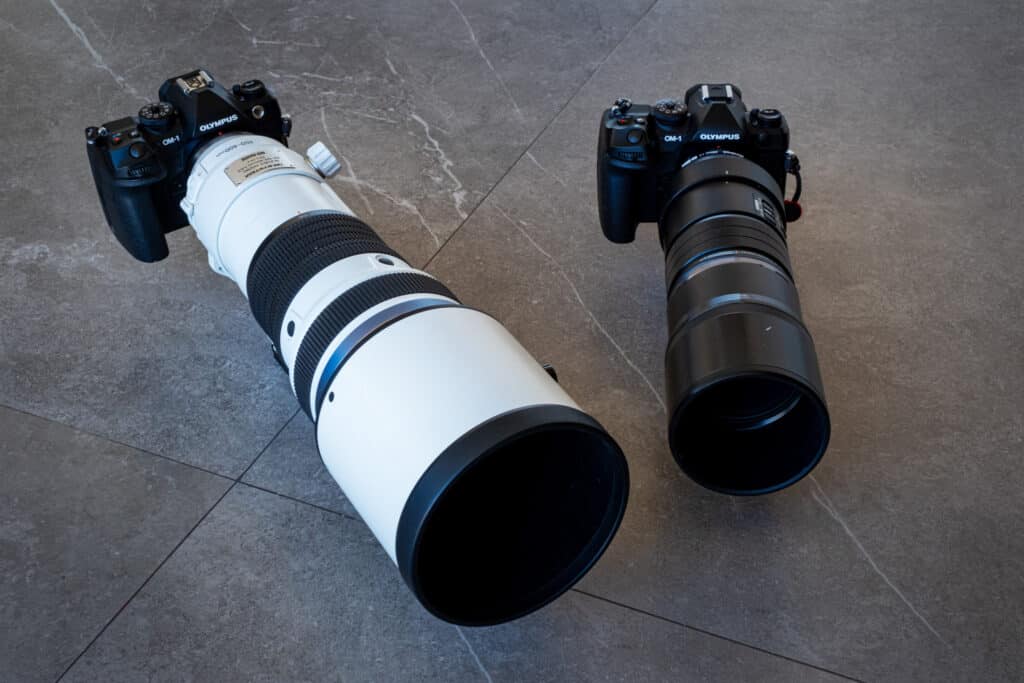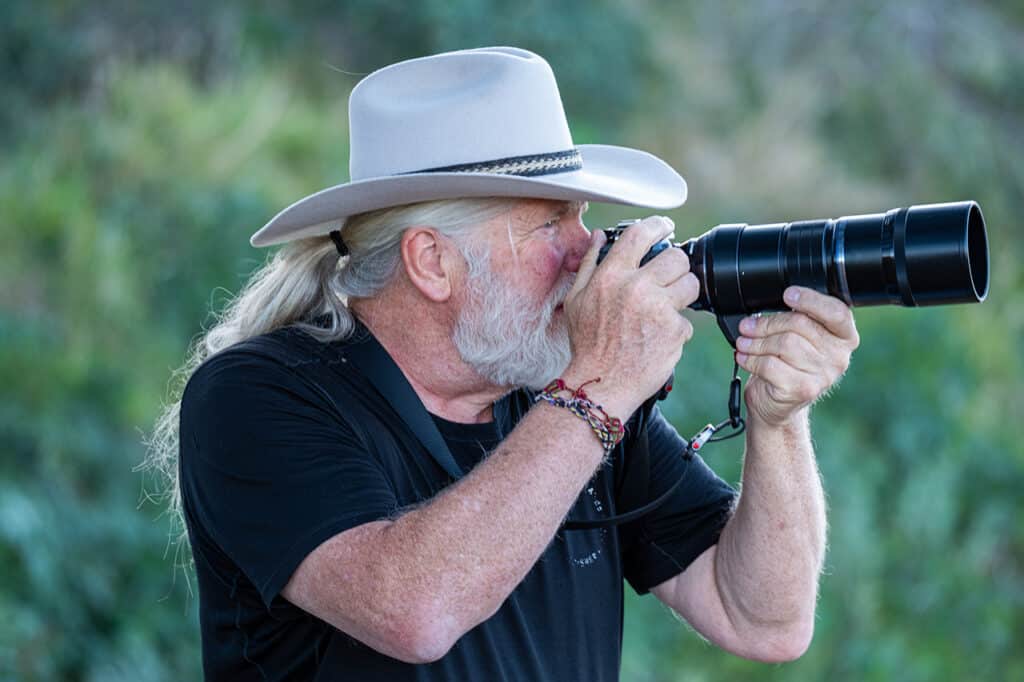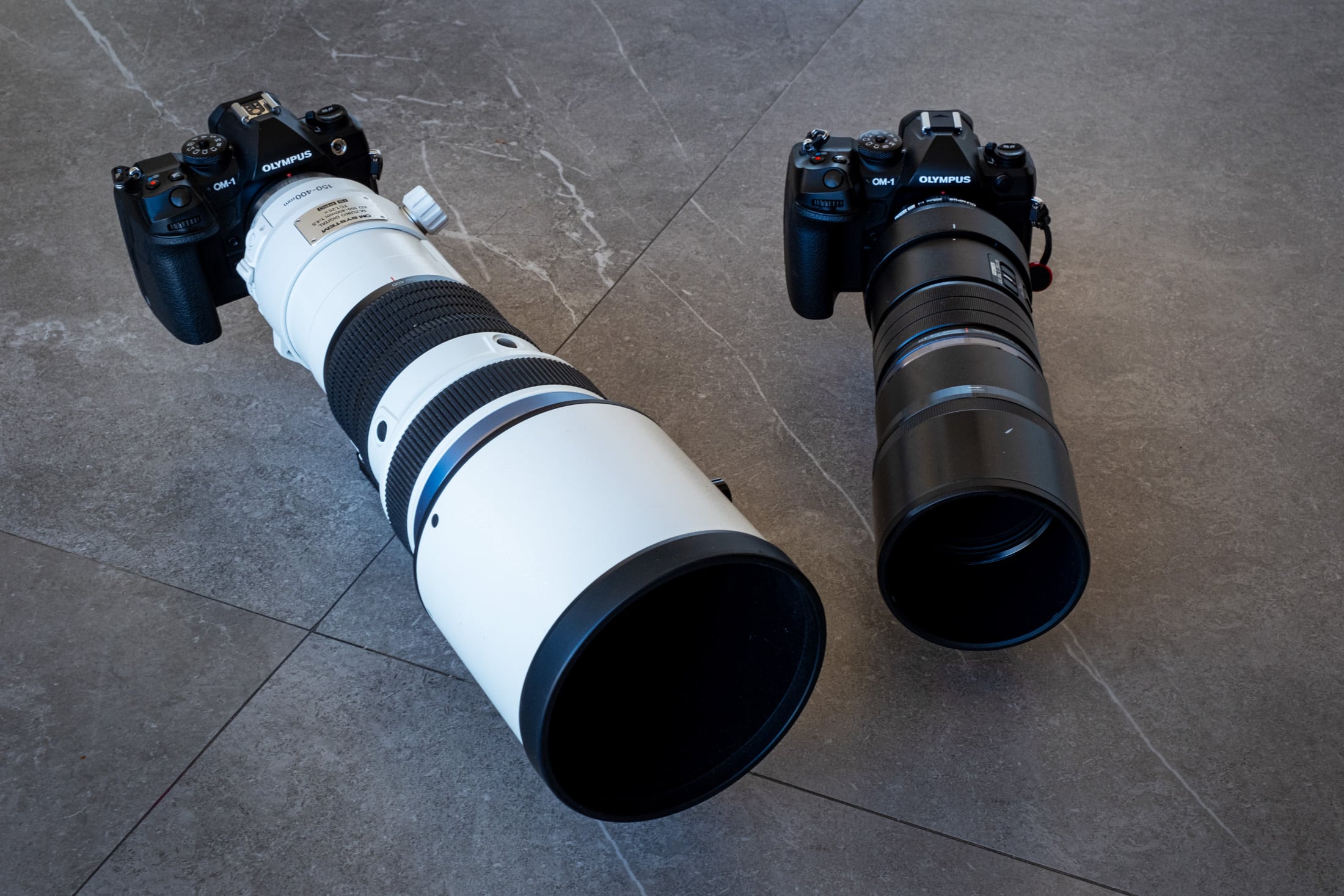
The lenses by stats:
150-400 f4.5
- Cost: $7500
- Reach: 500mm f5.6 with 1.25 TX activated
- Reach with TX converted to Full Frame: 1000mm f5.6
- Weight: 4.5 pounds with lens hood
- Close focus distance: 1.3 meters
- Image Stabilization up to 8 stops
300 f4
- Cost $2800 + $350 for 1.4 TX =$3150
- Reach with 1.4 TX attached: 420mm f5.6
- Reach with TX converted to Full Frame: 840mm f5.6
- Weight: 3.1 pounds with TX and lens hood
- Close focus distance: 1.4 meters
- Image Stabilization up to 5 stops
While this article is a comparison, it is not a “versus” comparison. Both lenses are finely designed and built pieces of equipment. Both Tomy and I can say with complete confidence after using these lenses extensively for over a month and photographing birds under a wide variety of conditions and situations, that both lenses performed exceedingly well.
This review is also not a technical test of either of these lenses, there are other sites that are far more technically oriented which can give you those results. What this review does is reflect upon the performance of the lenses after extensive use in the field for over a month.
On paper the 150-400mm has some clear advantages:
- 1000mm f5.6 reach vrs 840mm f5.6 reach
- Close focus is 10cm closer
- Image Stabilization is greater by about 3 stops
The 300mm has a couple of big advantages of its own:
- Weight, it is 1.4 pounds lighter
- Cost, it is $4350 less expensive
But looking at specifications of a lens on paper can only do so much for you—it’s like trying to compare a stereo system by specs, it can’t be done. You have to work with a lens to understand it and gain an intimate understanding of how the lens really works. In fact I would submit that it takes at least a few thousand images over the course of several weeks or even months to really understand a lens.

What John says about the 300mm f4
I’ve owned this lens for over a year. I recently bought the OM-1 body and now I feel like I’m getting the full potential of the lens. Shooting with this lens every day for a month in Colombia and Yucatán, Mexico has given me a lot of field time under a wide variety of conditions and situations.

What Tomy says about the 150-400 f4.5
I have owned this lens since my Santa Claus account bought it for me just before Christmas. I also own the 300 F4.0. I wanted more reach without fumbling with TCs in the field. I bought the big white for my winter birding trips to Colombia and Mexico. I have been a professional photographer for 40 years and I have enjoyed some of the best lenses that Nikon and Canon and Olympus have made. This is my first super-telephoto, but I have owned the Nikon 300 F 2.8 and the Canon 100-400 vii. Both are part of superb systems. All long lenses require the best we can bring to this art form to bring out the best pictures. Why? Well, birding involves photography under often really tough conditions. Call me a dilettante, but I want to walk through a landscape and see a bird and swing my lens towards it and take a picture. I’ve walked with tripods and gimbals, I’ve sat in blinds. I love a good tripod/monopod with a camera on it…. but, you can’t swing either of them quickly enough to follow a bird through a tangle of branches or across the sky or through grasses to catch them well enough. And when the birds, as they often are, are 40 feet up in a tree, I can’t maneuver a tripod mounted camera at all. In great birding locations there are so many fast occurring opportunities that I treasure the swing and shoot response. Hence, my election of a camera and lens that is light, stabilized, and sharp. OM Systems fits the qualifications.
Auto-focus and Focus tracking
John 300mm:
What impresses me most about this lens is how the auto-focus, focus-tracking, and image stabilization work together to snap the bird into focus and track the eye focus. Many times while using this lens and seeing the birds I would react by swinging the camera round and seemingly before my eye and mind could fully comprehend what was in the frame I was pressing the back-focus button and shutter button almost simultaneously resulting in a sharp capture of the bird. On a few occasions the camera had a difficult time finding the subject for focus. Sometimes these occasions were due to interference of branches or foreground elements, and sometimes due to low or very flat lighting. These situations were rare and generally understandable given the conditions. The 300mm is equipped with a feature that allows you to easily disengage the auto-focus by simply pulling back on the focus ring. Once disengaged it is very easy to spin the focus ring and obtain a good focus. Many times once the bird is focused I could re-engage the auto-focus and the camera/lens system would then lock in the auto-tracking focus and follow the bird.
Tomy 150-400mm
The many auto-focus and tracking features of the OM1 body give you an almost limitless number of options. There are more on the 150-400 than on the 300. I shoot with aperture priority and auto ISO a lot. I often shoot with the single point bird tracking. The 150-400 has a much better manual focus override than the 300. It’s a one finger operation with my left hand on the lens barrel and is light and fast. The clutch mechanism of the 300 naturally pulls your lens down and out of focus when you engage it. You have to refind the bird and then focus. With the 150-400 this simply does not happen. Is this frequent? No, but I am not frequently looking for birds in tangles, but when it is a lifer, and I have flown 6000 miles to see it – well, I don’t want to lose it with a clutch. Plus, it has the internal 1.2x TC. Conveniently located next to the right index finger one can engage it in a moment.
Image Stabilization
John 300mm
The lens is very small and lightweight. This translates into a very pleasurable experience using it in the field. I could carry this lens all day and not get fatigued. I believe this makes a difference in the quality of the images you are able to get. Sore muscles are distracting and limit your creative energy. The lens is very well balanced with the camera body and I have no trouble holding it steady, even for fairly long periods of time. The image stabilization at 5 stops is 3 stops shy of the stabilization of the 150-400 but it always seemed to perform just fine and I never felt like it let me down, in fact most times it was pleasantly surprising how slow I could go with the shutter speed and still obtain a perfectly sharp image.
Tomy 150-400mm
The 8 stops of the image stabilization this lens and body provide is unchallenged in the photography world. I have made hand-held, 1/20th of a second exposures that are perfectly sharp. In the burst more than 70% of them were in focus and some of the others were a blur because the bird moved. I have also enjoyed the 1/25,000 infrequently. The weight is more than the 300, ’tis true. Frankly, I can’t hold either of them in place for three minutes waiting for a bird to jump from a perch. “Hey! Get a tripod, Tomy!” LOL!
Useability
John 300mm
If there is one short-coming of this lens it is because it is a fixed focal length lens. The only way to change your composition is by getting closer or further away from your subject, or by using teleconverters. Most of the time in bird photography, however, you are cropping your images in post process so I’d say reach is more of an issue than zoomability. There were a couple of occasions where I brought both my 1.4 TX and 2 TX converters and found myself juggling them to switch what was on the camera, or removing one to use just the lens and no TX. Most of the time I used the lens with the 1.4 TX converter attached. I found no difference in performance of the lens, either in the field performance of speed of focus, tracking, and IS, or during the post processing of the image files with a TX used. I found no degradation of quality performance in image sharpness while using the 1.4 TX. The image files that used the 2 TX may have resulted in an ever so slight degradation of sharpness, but I would say it was not a major concern.
Whether you use the lens with no TX (600mm reach equivalent) or with the 1.4 TX (840mm reach equivalent) or the 2 TX (1200mm reach equivalent) that is a pretty narrow view of the world. Finding a tiny little bird in a mass of branches or following the erratic flight of a very swift flying bird can and is a real challenge. One advantage of a zoom lens to get a wider view of the scene and then once locating the bird, zooming in to compose the final shot. This technique can be a real help, however, after using this fixed focal length lens for over a year I’ve become quite adapt at locating and tracking birds through the narrow view. Developing this talent took me quite a lot of practice. Birds in flight can still create a challenge for me. There is a device that Olympus makes called a Dot-finder which is designed to help you locate and track subjects with a long telephoto lens. I own this device but somehow never seem to remember to use it.
In short, I would rank the in-field handling of this lens very high.
Tomy 150-400
I never wish I had a wider field of view. I have one! I use it all the time. I never wish I had more reach. I have more reach. I use it all the time. Pixels on birds are important. Let me swing into that for a moment. As a pro I have owned a lot of digital cameras since 1998? when they first came out. We all used to sell 16×20’s to our clients when the cameras had 6 mbs and they were delighted. I sometimes crop to a third of the frame for social posts. Heyy! I am back to 6mbs! But my reach is 40% more than the 300/600 of the 300 F4 so I am happy! Without the internal TC I am shooting an 800 equivalent f 4.5. The bokeh is outstanding. At 25 yards the DOF is .2 meters. At the close focusing range of 4′ I am shooting at my feet or cropping a flower with a butterfly on it. I have a dot finder. At 600 mm it never finds the bird. Yes, I know how to adjust it. It doesn’t adjust far enough. I have used this lens with the 1.4 TC. OMG! 1400mm with the same sharpness, speed of focus and stability
Image post-processing
John 300mm
The image files from this lens are exceedingly sharp. It renders a great fidelity of tonal quality and handles low light very well. In fact, the brightness of the viewfinder in low light in the field is very good. There is very little apparent chromatic aberration and no apparent vignette issues either with blur or light fall-off. The bokeh or background blur on this lens is superb! Personally for quality of image I don’t think you can beat a prime lens. I also think I can squeeze a little bigger crop out of the image quality on a fixed focal lens over a zoom because of the superior image quality.
Tomy 150-400
Perfect color, perfect sharpness. Both the 300 and the 150-400 have some vignette when shooting against a solid sky. Easy to correct with the profiles and gone by F 5.6
Cost
John 300mm
I purchased my Olympus 300 f4 from Alan at Hunt Photo & Video used for about $1800. It was in mint condition. For a professional level bird photography lens that is very in-expensive! Even the brand-new price of $2800 is very reasonable for a lens of this quality and reach.
Tomy 150-400mm
I explored all the options from new to used in the big lens space. $7500 is more than the value of my 2007 Lexus RX 350! It is a lot less than the new 600 F 4 lenses from Canon and Nikon. I supposed I could have bought something else. But there was always a problem. Too heavy, needs a tripod, too big for international travel – needs its own seat, too costly, too old, too slow, too short. I love my 300 f4 but it stayed home this trip. I wasn’t using it at home once I had the new toy. Will I ever again? Hmmm. I think I will give it to my girlfriend if I can convince her to give up the binoculars. Good glass holds its value. I could sell this lens for a significant percentage of its retail cost.
Conclusion
John 300mm
This lens has performed very well for me over the last month. Even photographing side by side with Tomy who has the 150-400 I never felt wanting or disappointed with what I was able to capture versus what I saw Tomy capturing. (Yeah there might be just a little competitiveness here!) I believe that the 300 f4 might be just a tad quicker with the focus and focus tracking than the 150-400, but Tomy may not agree with me! I would say if you are looking for an upgrade from the Olympus 100-400 or you are in the market for a really good birding set-up that won’t break the bank buy the OM-1 with the 300mm f4. You won’t regret it. I will add one caveat with this recommendation, this is a fixed focal length lens, if you are unaccustomed to using a fixed focal length lens you should know that if takes some practice to get good at handling one.
Tomy 150-400mm
This lens is the bomb. I know John has missed shots I have got because he has told me he has. I have missed shots he has found. I have been able to get closer. We agree the half stop of aperture has not mattered in ISO. I will use the 4.5 in dark conditions and eschew the TC 5.6. I love that! It is as fast as the 300 to focus. It is heavy at the end of the day. During the day that weight contributes a bit to stability. I can’t move it as fast. It has a certain inertia. Perhaps part of that is the IBIS and ILIS. It seems to hold ME still! I bought the 150-400 because of the incredible reviews online. It has never disappointed me.

